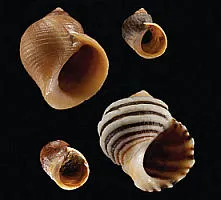
- English
- ePUB (mobile friendly)
- Available on iOS & Android
About this book
A definitive guide to the depth and breadth of the ecological sciences, revised and updated
The revised and updated fifth edition of Ecology: From Individuals to Ecosystems – now in full colour – offers students and practitioners a review of the ecological sciences.
The previous editions of this book earned the authors the prestigious 'Exceptional Life-time Achievement Award' of the British Ecological Society – the aim for the fifth edition is not only to maintain standards but indeed to enhance its coverage of Ecology.
In the first edition, 34 years ago, it seemed acceptable for ecologists to hold a comfortable, objective, not to say aloof position, from which the ecological communities around us were simply material for which we sought a scientific understanding. Now, we must accept the immediacy of the many environmental problems that threaten us and the responsibility of ecologists to play their full part in addressing these problems. This fifth edition addresses this challenge, with several chapters devoted entirely to applied topics, and examples of how ecological principles have been applied to problems facing us highlighted throughout the remaining nineteen chapters.
Nonetheless, the authors remain wedded to the belief that environmental action can only ever be as sound as the ecological principles on which it is based. Hence, while trying harder than ever to help improve preparedness for addressing the environmental problems of the years ahead, the book remains, in its essence, an exposition of the science of ecology. This new edition incorporates the results from more than a thousand recent studies into a fully up-to-date text.
Written for students of ecology, researchers and practitioners, the fifth edition of Ecology: From Individuals to Ecosystems is anessential reference to all aspects of ecology and addresses environmental problems of the future.
Frequently asked questions
- Essential is ideal for learners and professionals who enjoy exploring a wide range of subjects. Access the Essential Library with 800,000+ trusted titles and best-sellers across business, personal growth, and the humanities. Includes unlimited reading time and Standard Read Aloud voice.
- Complete: Perfect for advanced learners and researchers needing full, unrestricted access. Unlock 1.4M+ books across hundreds of subjects, including academic and specialized titles. The Complete Plan also includes advanced features like Premium Read Aloud and Research Assistant.
Please note we cannot support devices running on iOS 13 and Android 7 or earlier. Learn more about using the app.
Information

Chapter 1
Organisms in their Environments: the Evolutionary Backdrop
1.1 Introduction: natural selection and adaptation
- The individuals that make up a population of a species are not identical: they vary, although sometimes only slightly, in size, rate of development, response to temperature, and so on.
- Some, at least, of this variation is heritable. In other words, the characteristics of an individual are determined to some extent by its genetic make‐up. Individuals receive their genes from their ancestors and therefore tend to share their characteristics.
- All populations have the potential to populate the whole earth, and they would do so if each individual survived and each individual produced its maximum number of descendants. But they do not: many individuals die prior to reproduction, and most (if not all) reproduce at a less than maximal rate.
- Different ancestors leave different numbers of descendants. This means much more than saying that different individuals produce different numbers of offspring. It includes also the chances of survival of offspring to reproductive age, the survival and reproduction of the progeny of these offspring, the survival and reproduction of their offspring in turn, and so on.
- Finally, the number of descendants that an individual leaves depends, not entirely but crucially, on the interaction between the characteristics of the individual and its environment.

Table of contents
- Cover
- Table of Contents
- Title Page
- Copyright Page
- Dedication Page
- Preface
- Introduction: Ecology and its Domain
- Chapter 1: Organisms in their Environments: the Evolutionary Backdrop
- Chapter 2: Conditions
- Chapter 3: Resources
- Chapter 4: Matters of Life and Death
- Chapter 5: Intraspecific Competition
- Chapter 6: Movement and Metapopulations
- Chapter 7: Life History Ecology and Evolution
- Chapter 8: Interspecific Competition
- Chapter 9: The Nature of Predation
- Chapter 10: The Population Dynamics of Predation
- Chapter 11: Decomposers and Detritivores
- Chapter 12: Parasitism and Disease
- Chapter 13: Facilitation: Mutualism and Commensalism
- Chapter 14: Abundance
- Chapter 15: Pest Control, Harvesting and Conservation
- Chapter 16: Community Modules and the Structure of Ecological Communities
- Chapter 17: Food Webs
- Chapter 18: Patterns in Community Composition in Space and Time
- Chapter 19: Patterns in Biodiversity and their Conservation
- Chapter 20: The Flux of Energy through Ecosystems
- Chapter 21: The Flux of Matter through Ecosystems
- Chapter 22: Ecology in a Changing World
- References
- Organism Index
- Subject Index
- End User License Agreement